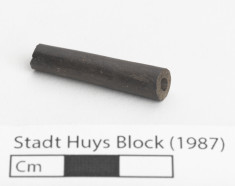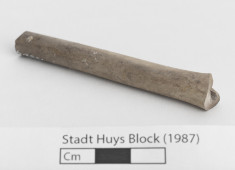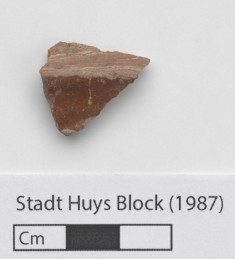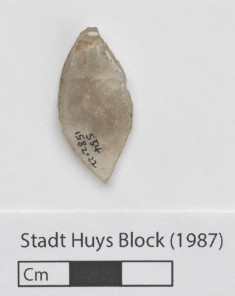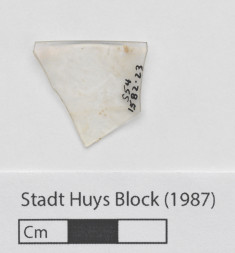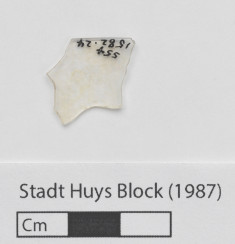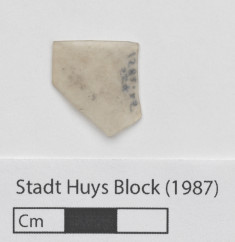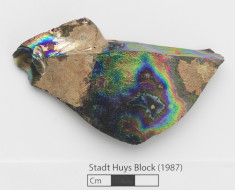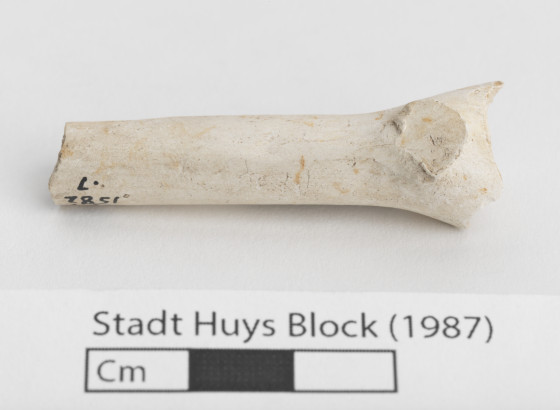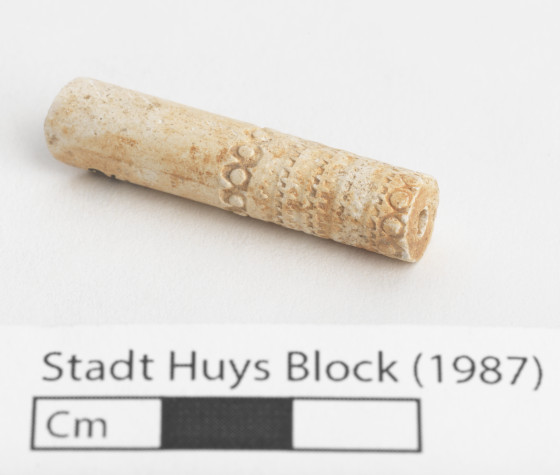Introduction: Lots 8, 9, and 15 are modern designations for adjacent parcels of land that were owned together and used as a single property until the early 1830's. Excavations produced important discoveries like that of the Colonial-era Lovelace Tavern, proving that significant archaeological resources could still exist in urban spaces. Project archaeologists were able to lobby for increased time and funds to continue their work on the strength of these finds, leading to additional discoveries. In all, the project provided considerable information about the history of New York City and its inhabitants from the 17th to the 20th centuries.
The tavern was constructed by the second English Governor of New York, Francis Lovelace, around 1670. Taverns were important spaces for colonial communities, serving as centralized meeting places that fulfilled important social, recreational, political, and economic functions. Lovelace Tavern became New York's temporary City Hall starting in the late-17th century after the Stadt Huys fell into disrepair and was demolished in 1706.
Rationale: Remains of the Lovelace Tavern were first encountered during the excavation of Test Cut AQ. Overall, archaeologists excavated 27 test cuts inside, adjacent to, or within the walls of the tavern, representing around fifty-percent of the total area. Test Cut BX was placed in the extreme southern part of Lot 8 as it hit Pearl Street in an attempt to find the front of the Lovelace Tavern. Though significant 19th- and 20th-century disturbances were found across the test cut, archaeologists did recover the remains of the Tavern's wooden floor and possibly its front stairs. In addition, the Tavern's front wall was discovered 3-inches south of Test Cut BX by probe. BX was expanded to the west (BX1) and to the north (BX2) to further test the area for archaeological resources.
Results: A series of burned wooden planks from the floor of the Tavern were discovered at 16- to 20-inches below excavation surface. The tavern floor layer was more intact in the northern 2/3rds of the test cut due to the builder's trenches found in the southern portion.
Lot 8, Test Cut BX, Strata XIX, Level A
-
Collection method
Backhoe, Shovel, Trowel, Brush, Screen (1/2-inch mesh). Arbitrary Level.
-
Soil description
Burned Wood
-
Munsell
10YR 4/3



